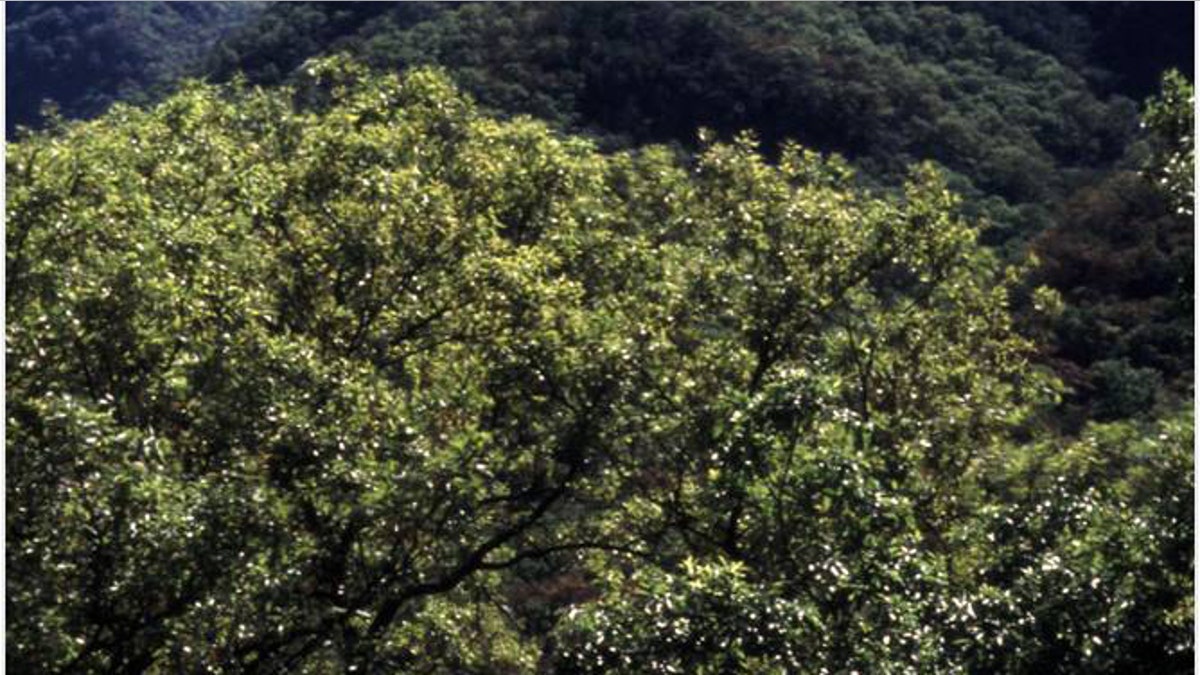
Mexican oak, Quercus Canbyi, Canby's Oak. (Carl Schoenfeld)
Thirty years ago, when John Fairey first travelled on a plant-finding mission to Mexico, he expected to see cactus and agave. Not oak trees.
"I had no idea," said the octogenarian who owns Peckerwood Garden, a private garden in Hempstead, Texas that is open to the public on weekends. "But I learned later that Mexico is supposed to be the center of distribution for all oak trees."
Indeed, Mexico has the greatest number and diversity of oak trees in the world, some 161 species in all. Experts believe birds distributed oak seeds to other areas when the continents were still aligned.
These days with extreme weather on the rise, many are finding that Mexican oaks are proving to be the best trees to plant in their yards.
"The Mexican white oak in particular has become a very popular tree," says Lonnie Childs, president of the Native Plant Society of Texas. "They're very drought tolerant but they can also handle extreme cold, which we've had for two winters in a row now."
- Where No Latina Has Gone Before
- Budget Travel: Best of Barcelona
- Cleaning Up After Four-Legged Superstars
- Enchilada Smackdown: Mexico vs. United States
- Paola Moya: From Taking Care of Dogs to Renovating Building Landmarks
- Ancient Home Ruins Found in Mexico
- Latinos Changing the Face of Wine
- Holy Tree! Virgin Mary Spotted on Bark
- Budget Travel: Most Unusual Hotels in Latin America
Another plus, he said, is that Mexican white oaks are resistant to "oak wilt," a fatal fungal disease.
The white oak, also known as the Monterrey oak, is considered "barely-native" to Texas because a grove of white oaks was discovered 20 miles from the border of Mexico in the 1990s. So far, no other native white oak stands have been found in the state but the tree has been propagated from San Antonio to Dallas and done well.
Fairey's travelling partner for many of his forays into Mexico was famed Texas horticulturalist Lynn Lowrey, who spent much of his time in Mexico collecting plants that grew in mountain ranges between 3,000 and 6,000 feet because he believed they would do well in Texas.
"While Lynn collected a wide array of plant materials, oaks held a special place in his heart," said David Creech, a professor at Stephen F. Austin State University, who also accompanied Lowrey on some of his expeditions to Mexico.
In addition to the white oak, Lowrey also brought back a number of other oak tree species that have faired well in the Lonestar state including Quercus gracilliformia (Graceful oak), Quercus canbyi (Canby's oak), Quercus Nuttallii (Nuttall oak), Quercus Germana (Royal Oak) and Quercus shumardii (Shumard oak.)
All of these oak trees are considered evergreen when they are planted in the United States, meaning they do not loose their leaves in the winter, another plus for gardeners.
Creech said Mexican oaks have done well in other U.S. states including North and South Carolina and Oregon. And Fairey said Mexican oaks have also found their way to the British Isles.
Both said with extreme weather a phenomenon that's likely here to stay, due to global warming, more and more people may find themselves planting Mexican oaks.
"We call them climate-change friendly plants," Creech said.
The only problem these days with getting Mexican oaks is the dangerous conditions in Mexico.
"There's a demand for the trees at local nurseries," Fairey said. "But no one is collecting right now. It's just too dangerous, too many people have been killed in the last five or six years."
"Hopefully this will get better," he added. "I'm very anxious to go back to Mexico. It's a beautiful country."




















